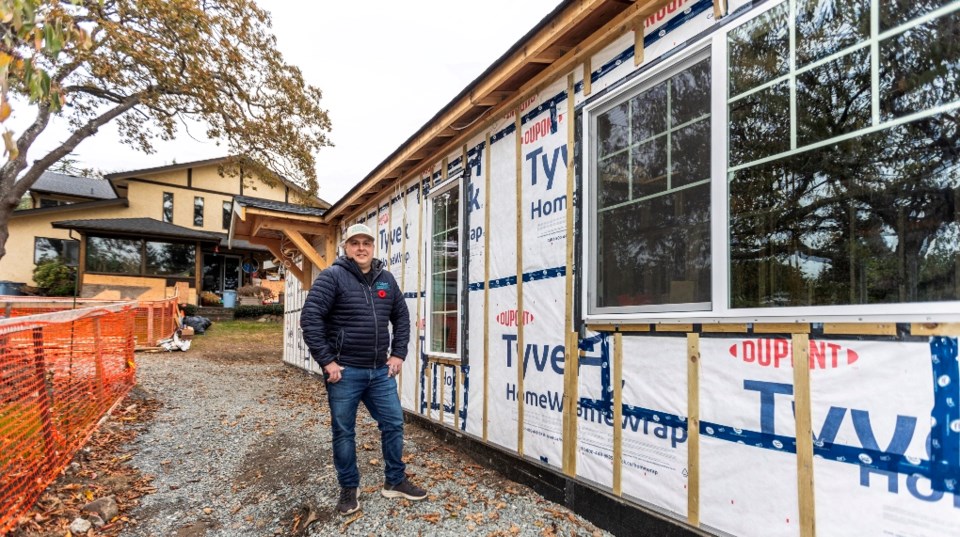The province introduced legislation Wednesday paving the way for more small-scale, multi-unit home development, which it says could see 130,000 new homes built in the next 10 years.
It gave municipalities tight timelines to make it happen, however, saying bylaws must be updated to incorporate the small-scale-multi-unit zoning changes by next summer.
If a community doesn’t change its bylaws by the deadline, the province could step in to do it, it said.
The changes, aimed at communities of more than 5,000 people, include allowing multi-unit developments on single-family and duplex lots, with the number of units determined by the size of a lot and its proximity to transportation, ranging from three to six. Developments could include townhouses, laneway homes and houseplexes.
Zoning that is limited to single-family construction will disappear, other than in some smaller communities.
Vancouver, which has its own charter, isn’t included in the new rules, but Vancouver council approved bylaw changes this fall allowing for multi-unit homes in neighbourhoods where only single-family homes had been previously permitted.
Housing Minister Ravi Kahlon, who initially revealed the proposals in April, said the legislation aims to streamline municipal processes to get more homes built faster.
“Our government is full-speed ahead when it comes to taking meaningful actions to address B.C.’s housing crisis,” he said Wednesday.
The province said it will provide a policy manual by December for the approximately 85 municipalities affected by the changes to help them navigate and implement the changes by the end of June.
By Dec. 31, 2024, each municipality must complete an interim housing needs report looking at what is needed over the next 20 years.
A $51-million fund will help municipalities support housing initiatives, the province said. Another $10 million is available through the local government development approvals program.
Municipalities will be required to complete updates to official community plans by Dec. 31, 2025.
Kahlon said he does not expect to see land values spike as a result of the changes. In other jurisdictions, such as Auckland, New Zealand, “when you rezone a large area, not just a small pocket in a community … the land lift is actually very small compared to what it would be if one property had been rezoned.
Under the changes, if an application for a multi-unit project complies with the official community plan, it will not have to go to public hearing for approval. Official community plans, in turn, will have to be updated every five years.
Municipalities will not be allowed to limit the number of units on a property to below the number set out in provincial legislation.
One secondary suite or laneway home per property will be permitted in all communities.
“Anyone looking for a place to live in a community they love knows how hard it is — and outdated zoning rules are making that even harder,” Premier David Eby said.
“Constructing mostly high-rise condo towers or single-family homes means B.C. isn’t building enough small-scale, multi-unit homes that fit into our existing neighbourhoods and give people more housing options that are within reach.”
Backyard Bungalows owner Nick Kardum, who builds garden suites or laneway homes in the capital region, called the new legislation “wonderful.” “It makes it easier and quicker to build small homes,” he said, adding demand is high for garden suites.
Most of the homes he builds, which can run from about 400 square feet to 1,000 square feet, are for families. Sometimes a new home is added in the backyard for grown children and their families or in other cases, homeowners want to downsize to the new unit, letting the next generation move into the main house.
“One of the main benefits is you don’t have to pay for the land,” Kardum said.
Ben Mycroft, director of development for GableCraft homes, said the province is “on the right track,” although he says there might be obstacles at the local government level when its comes to things like parking, sewer capacity and aging infrastructure.




